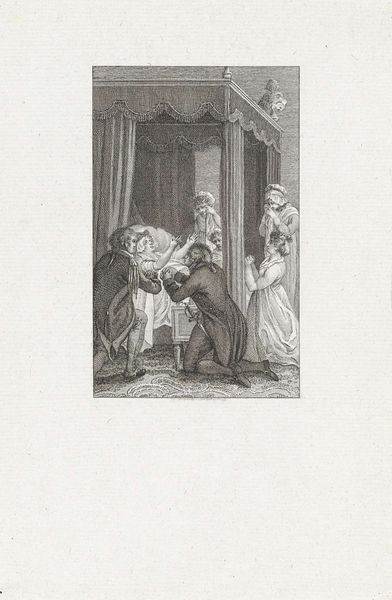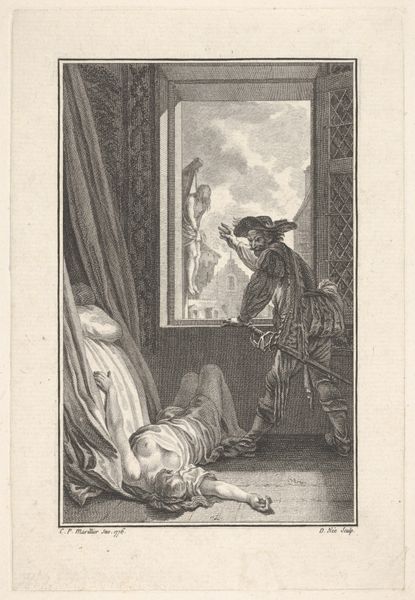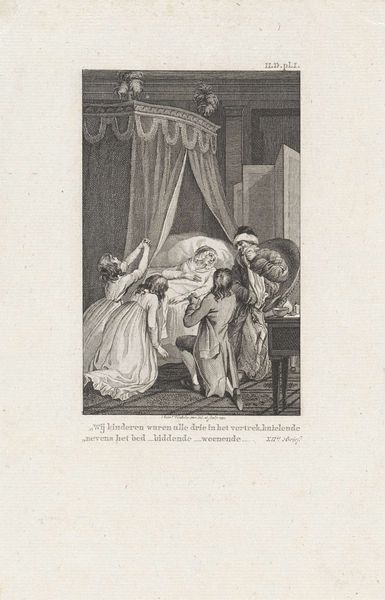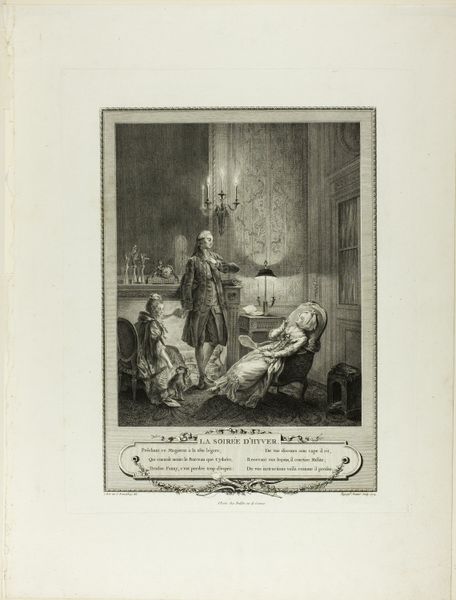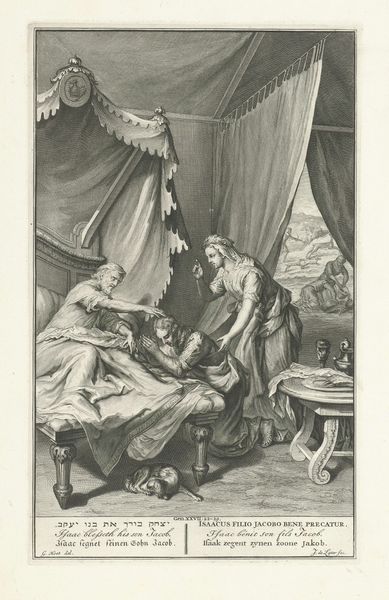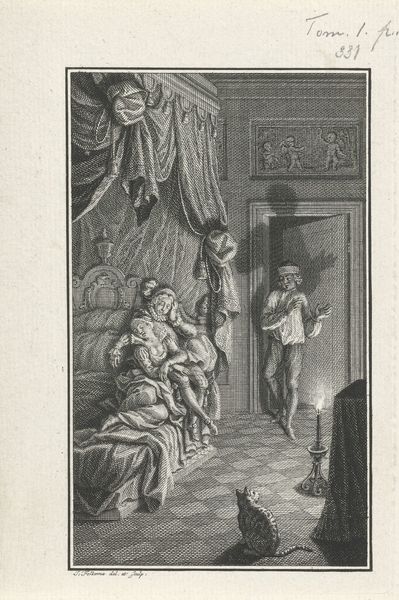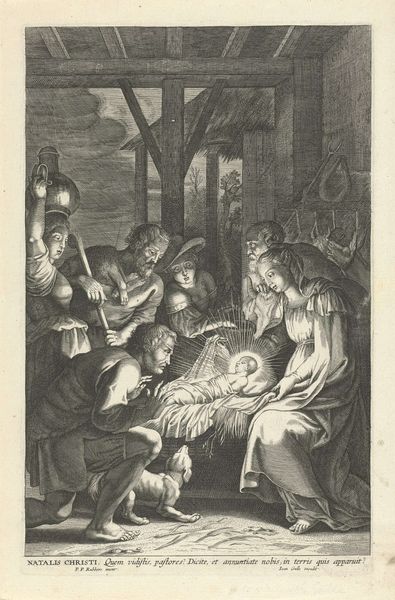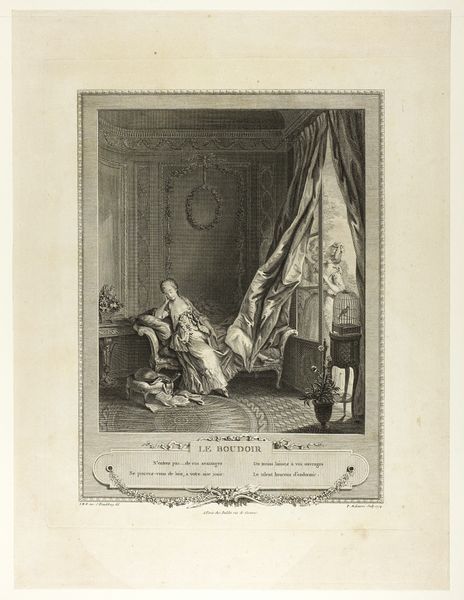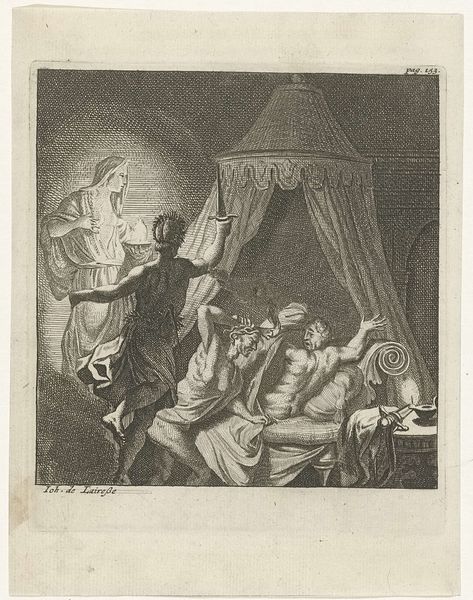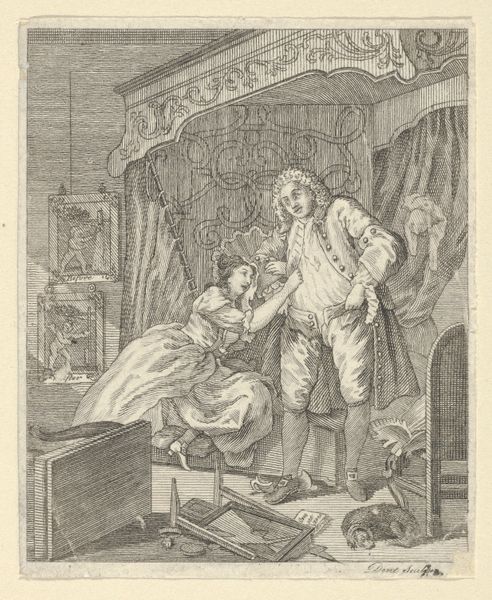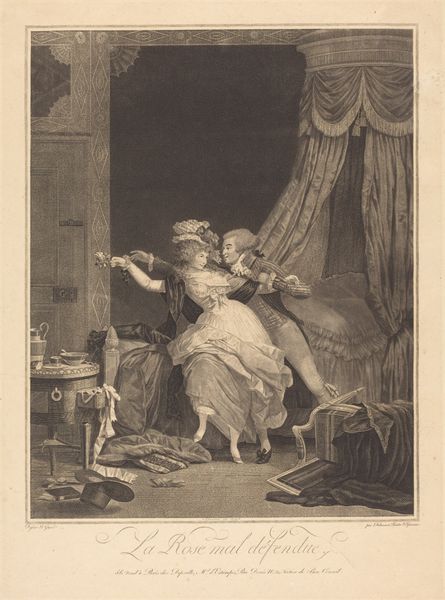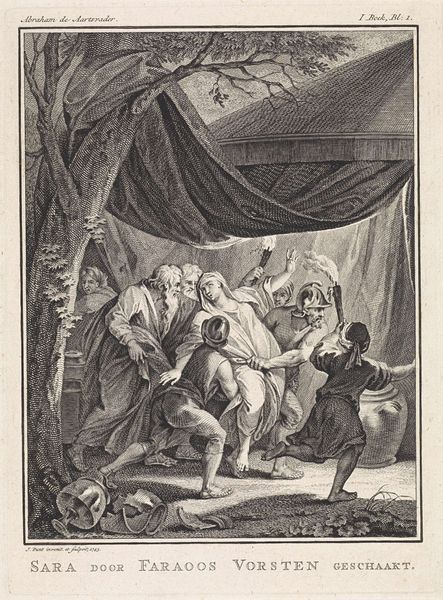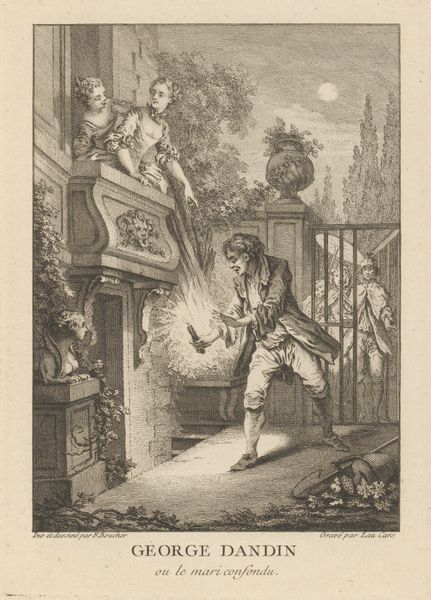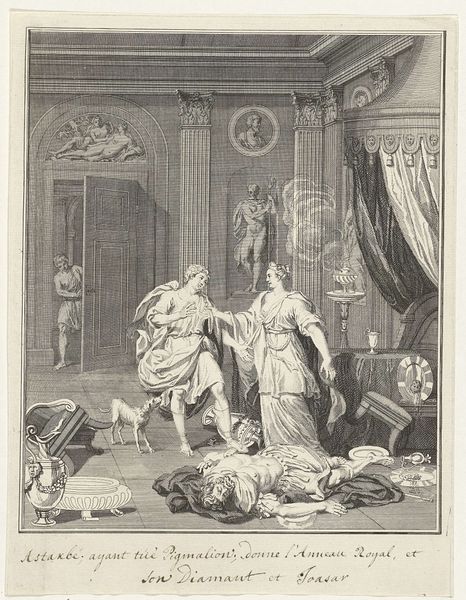
Dimensions: height 190 mm, width 150 mm
Copyright: Rijks Museum: Open Domain
Editor: Here we have Simon Fokke's 1766 engraving, "David spaart Sauls leven op de Chachila," currently housed in the Rijksmuseum. The level of detail achieved purely through lines is quite stunning. What story do you think this piece tells, and how does it fit within its historical context? Curator: This engraving illustrates a scene from the Old Testament where David spares Saul's life. Looking at it from a historical lens, we can see how deeply embedded biblical narratives were in the public consciousness of 18th-century Europe. This wasn't simply a depiction of a story; it was a reflection on power, morality, and divine right. Fokke chose to depict a moment of clemency in what would have likely been seen as a justification for current institutions of power during that time. What are your thoughts on that connection? Editor: That's an interesting observation. So, an artwork like this wouldn't simply function as a recounting of the Bible, but also as a potential piece of propaganda or even simply commentary on current rulers at that time? Curator: Precisely! Prints like these had a wide circulation and played a crucial role in shaping public opinion, and moral stances on leadership. How do you feel that Fokke makes that apparent in his composition and arrangement of figures in the work? Editor: Seeing the fully armored figure towering above Saul on the bed clearly symbolizes power. Yet, the decision to *not* strike—emphasized by the spear held aloft—speaks to a moral restraint that rulers perhaps *should* emulate. It’s fascinating how visual storytelling intersects with political messaging of the day. Curator: Absolutely. And remember, museums themselves play a role in perpetuating these narratives. By exhibiting such works, they contribute to the ongoing dialogue about history, power, and ethics. Editor: So it is really about the convergence between artwork and viewer, with the work's meaning molded and perpetually remade by ongoing political and institutional forces? Curator: Precisely, and it makes me think of how we continually recontextualize and reinterpret art in our current times as well!
Comments
No comments
Be the first to comment and join the conversation on the ultimate creative platform.
